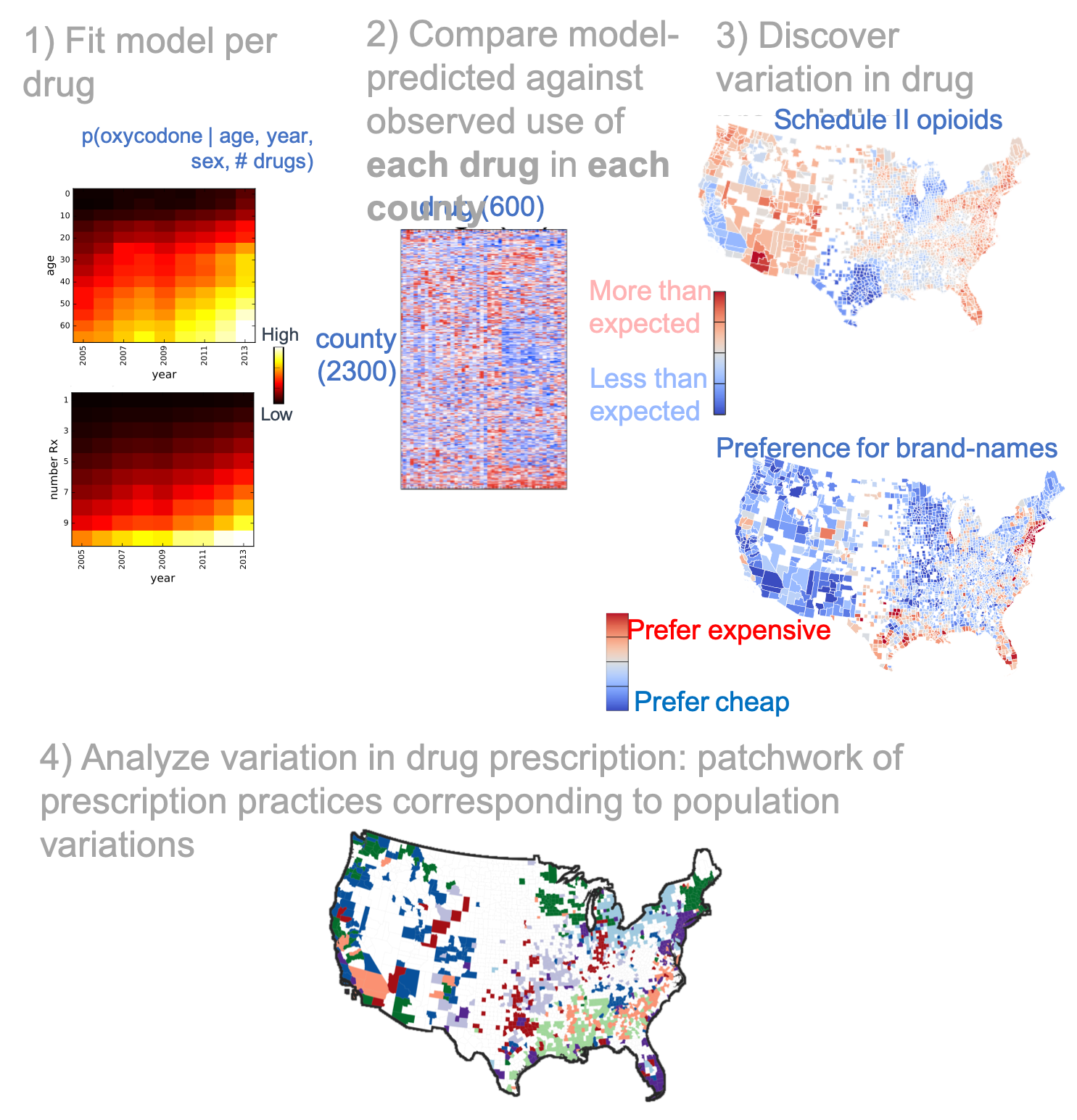Patchwork of contrasting medication cultures across the USA
Abstract
Health in the United States is markedly heterogeneous, with large disparities in disease incidence, treatment choices and health spending. Drug prescription is one major component of health care—reflecting the accuracy of diagnosis, the adherence to evidence-based guidelines, susceptibility to drug marketing and regulatory factors. Using medical claims data covering nearly half of the USA population, we have developed and validated a framework to compare prescription rates of 600 popular drugs in 2334 counties. Our approach uncovers geographically separated sub-Americas, where patients receive treatment for different diseases, and where physicians choose different drugs for the same disease. The geographical variation suggests influences of racial composition, state-level health care laws and wealth. Some regions consistently prefer more expensive drugs, even when they have not been proven more efficacious than cheaper alternatives. Our study underlines the benefit of aggregating massive information on medical practice into a summarized and actionable form.
